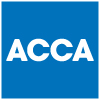Previously, disposals of UK residential properties are reported and any capital gains tax (CGT) calculated through your Self-assessment Tax Return. The tax is therefore due for payment on the 31st January following the tax year of disposal.
What is changing?
This will all change for disposals of UK residential property after 6th April 2020 (the date of disposal is normally deemed to be the date of exchange). For these disposals, they must be reported to HM Revenue and Customs and the Capital Gains Tax paid within 30 days of the date of completion via the Capital Gains Tax on UK residential property service.
There is an exemption for the disposals where there is no tax to pay. Typically, these include properties that are covered by the main residence exemption; gains within the individual’s capital gains exemption or where there are losses from earlier capital disposals that reduce the gain below the exemption.
It is therefore vital to start collating information to compute the gain as soon as a disposal is anticipated. In some cases, a disposal may require professional valuations to be obtained.
CGT liability
There are penalties for late filing of the information and payment of the Capital Gains Tax which follow the same rules as for self-assessment.
For those that do not normally file a Self-assessment Tax Return, there would be no need to do so in respect of the disposal. For those that do, they will need to disclose the gain on the Self-assessment Return as well.
When filing through the Capital Gains Tax in UK residential property service the tax payable is, in many cases, likely to be an estimated as it is not known the total income will be for the year or there may be later capital disposals the at affect the amount payable. The tax is therefore treated as a payment on account of the final liability which will be finalised either as an amendment via new service or disclosure of the final position on a self-assessment Tax Return.
The new rules apply to individuals, personal representatives and trustees.
How we can help
We are always on hand to answer any questions you may have about Capital Gains Tax. We can advise as to the best course of action in your own particular circumstances, so please do contact us.
Disclaimer: Content posted is for informational & knowledge sharing purposes only, and is not intended to be a substitute for professional advice related to tax, finance or accounting. Each comment posted by third party readers/subscribers of our website on topics of tax and accounting is their personal opinion and due professional care should be taken by you before you act after reading the contents of that post. No warranty whatsoever is made that any of the posts are accurate and is not intended to provide, and should not be relied on for tax or accounting advice.




